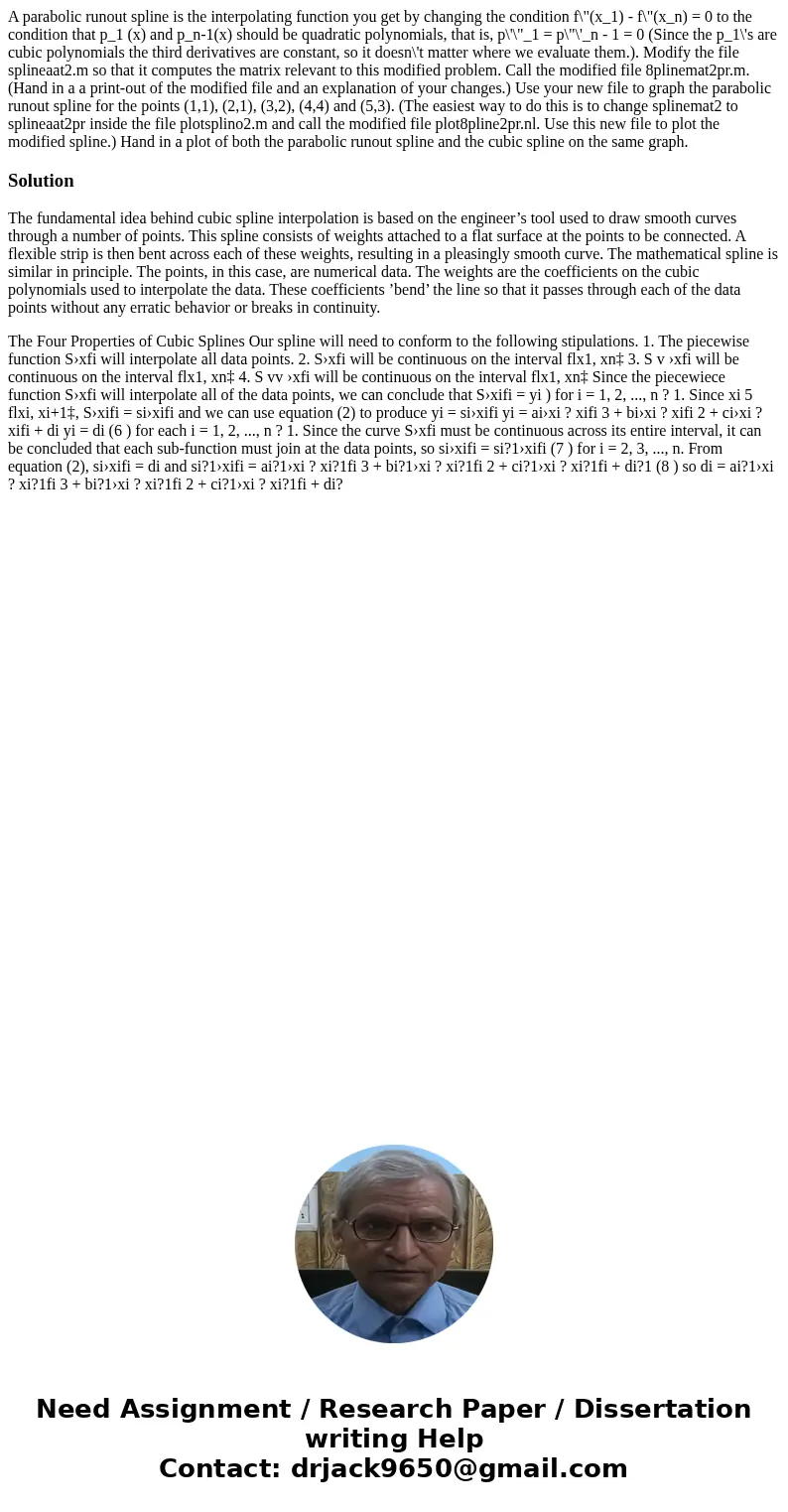A parabolic runout spline is the interpolating function you
Solution
The fundamental idea behind cubic spline interpolation is based on the engineer’s tool used to draw smooth curves through a number of points. This spline consists of weights attached to a flat surface at the points to be connected. A flexible strip is then bent across each of these weights, resulting in a pleasingly smooth curve. The mathematical spline is similar in principle. The points, in this case, are numerical data. The weights are the coefficients on the cubic polynomials used to interpolate the data. These coefficients ’bend’ the line so that it passes through each of the data points without any erratic behavior or breaks in continuity.
The Four Properties of Cubic Splines Our spline will need to conform to the following stipulations. 1. The piecewise function S›xfi will interpolate all data points. 2. S›xfi will be continuous on the interval flx1, xn‡ 3. S v ›xfi will be continuous on the interval flx1, xn‡ 4. S vv ›xfi will be continuous on the interval flx1, xn‡ Since the piecewiece function S›xfi will interpolate all of the data points, we can conclude that S›xifi = yi ) for i = 1, 2, ..., n ? 1. Since xi 5 flxi, xi+1‡, S›xifi = si›xifi and we can use equation (2) to produce yi = si›xifi yi = ai›xi ? xifi 3 + bi›xi ? xifi 2 + ci›xi ? xifi + di yi = di (6 ) for each i = 1, 2, ..., n ? 1. Since the curve S›xfi must be continuous across its entire interval, it can be concluded that each sub-function must join at the data points, so si›xifi = si?1›xifi (7 ) for i = 2, 3, ..., n. From equation (2), si›xifi = di and si?1›xifi = ai?1›xi ? xi?1fi 3 + bi?1›xi ? xi?1fi 2 + ci?1›xi ? xi?1fi + di?1 (8 ) so di = ai?1›xi ? xi?1fi 3 + bi?1›xi ? xi?1fi 2 + ci?1›xi ? xi?1fi + di?

 Homework Sourse
Homework Sourse